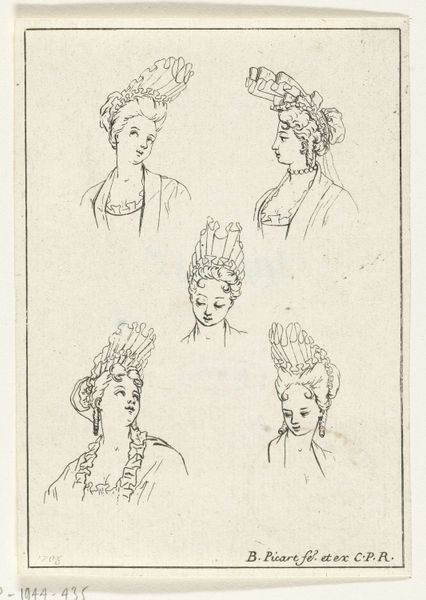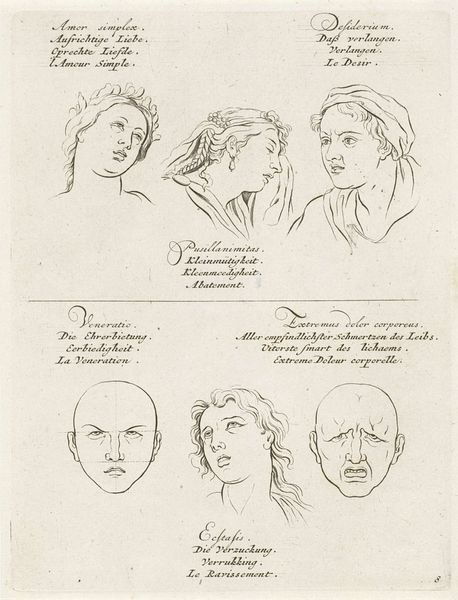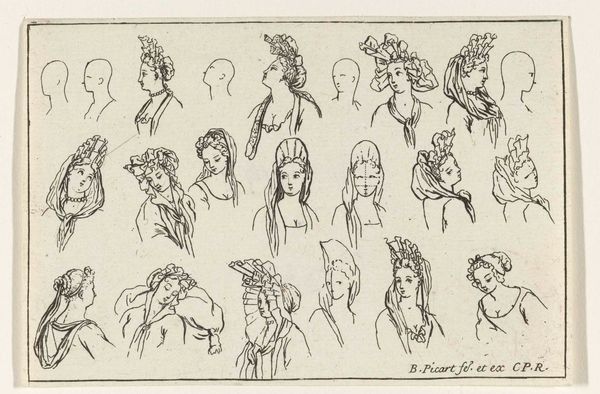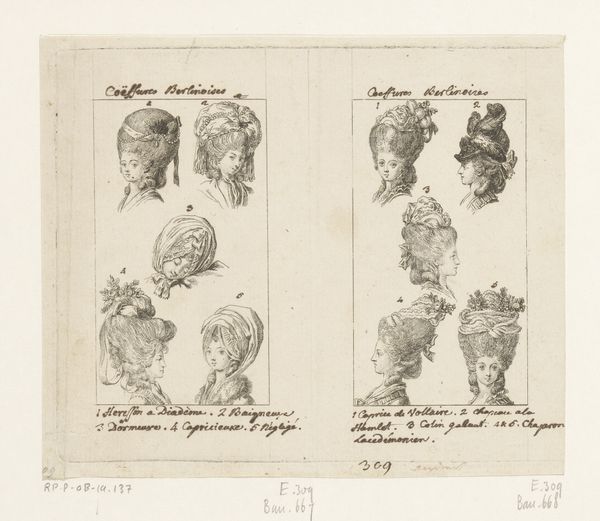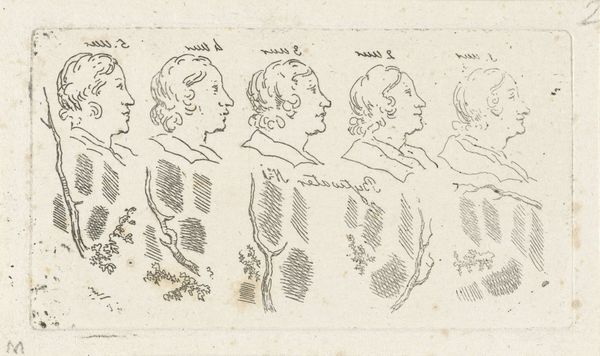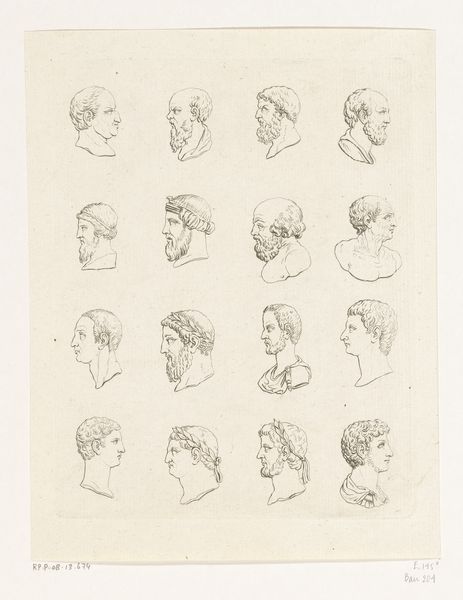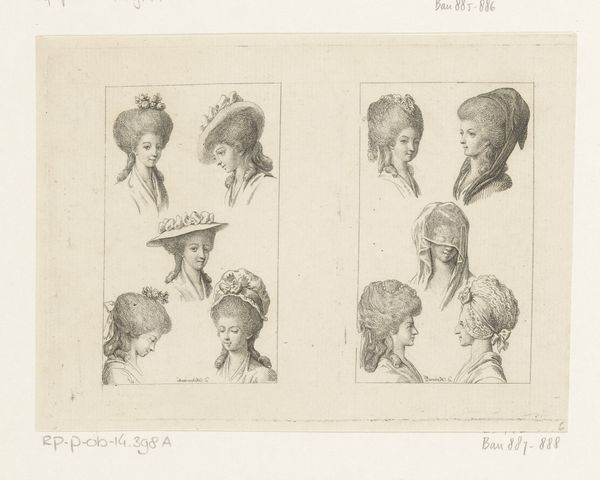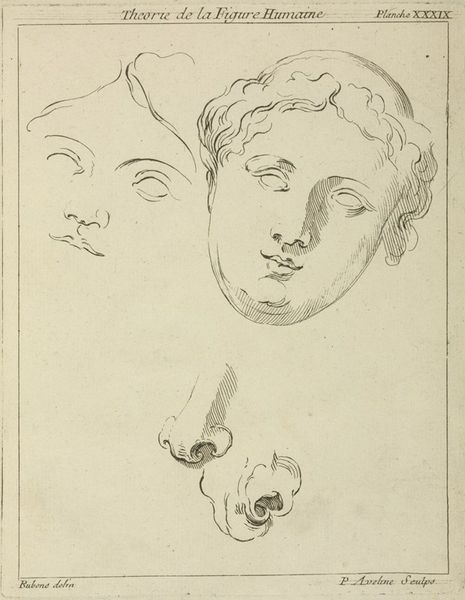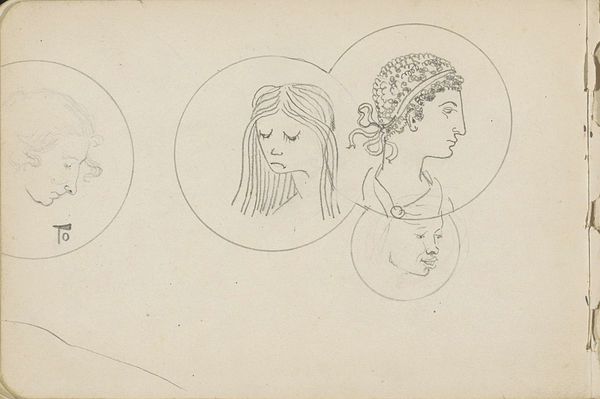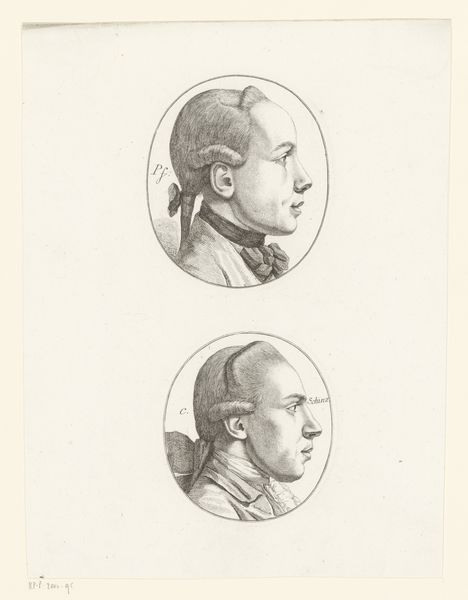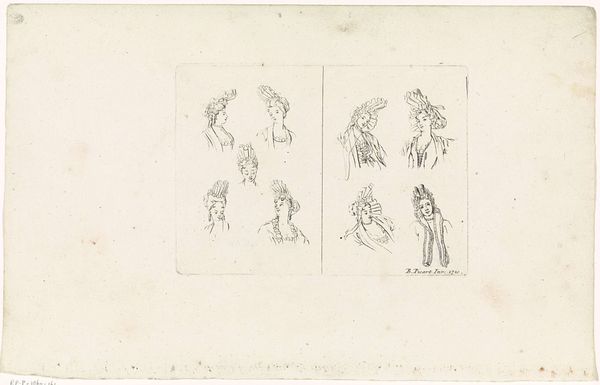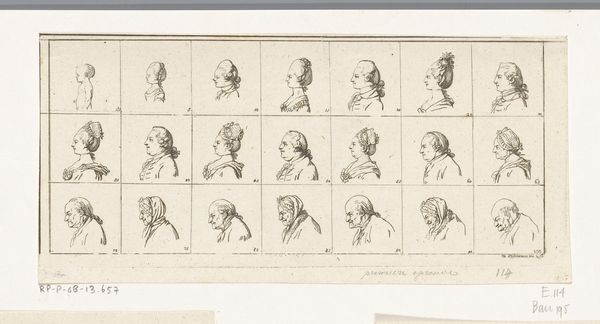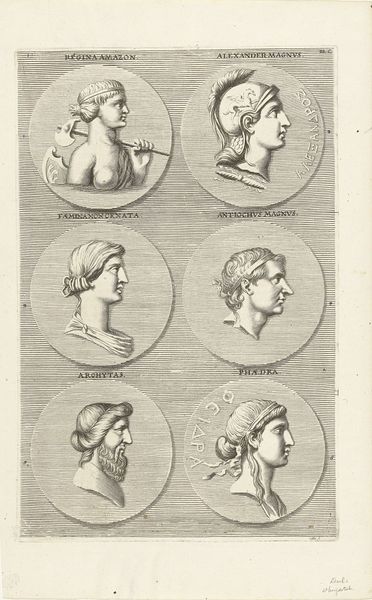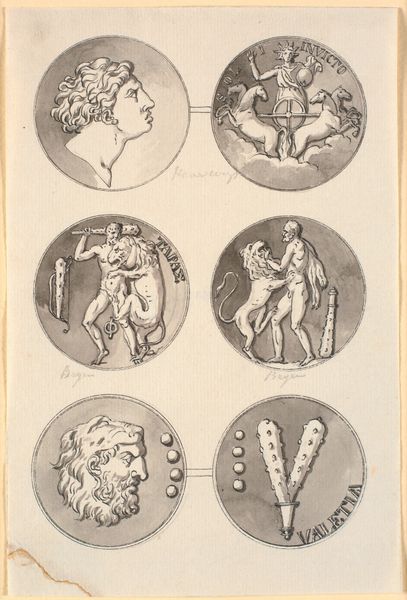
drawing, print, paper, ink
#
portrait
#
drawing
#
neoclacissism
#
light pencil work
#
quirky sketch
# print
#
pencil sketch
#
paper
#
form
#
personal sketchbook
#
ink
#
idea generation sketch
#
sketchwork
#
ink drawing experimentation
#
line
#
sketchbook drawing
#
pencil work
#
academic-art
#
sketchbook art
Dimensions: height 270 mm, width 213 mm
Copyright: Rijks Museum: Open Domain
Curator: Here we have "Studie van verschillende klassieke koppen," or "Study of Various Classical Heads," created in 1785 by Reinier Vinkeles. It’s currently held at the Rijksmuseum. It appears to be a print, with both ink and pencil on paper. What are your first impressions? Editor: Immediately, I see echoes of the ancient world trying to surface through the artist's hand. It feels almost ghostly, like he’s trying to summon something lost to time. The array of heads, neatly organized, hints at a yearning for a past ideal. Curator: It's definitely an exercise in Neoclassicism, a period fixated on revisiting and reinterpreting classical forms. Each head seems meticulously copied from different ancient sources, some with coins around them and careful numbered notations. Editor: The obsessive detail and variety… it speaks volumes. This isn’t just about copying. It’s about dissecting and understanding. You're seeing classical ideals presented almost as specimens in a lab. Curator: Yes! Consider, too, the broader cultural context. Neoclassicism often served as a visual language for power and order, ideals that the burgeoning bourgeois class was happy to adopt as their own. Editor: I suppose so. But to me, this piece also seems like a personal exploration. It almost suggests the artist wrestling with his relationship to the past, to history and trying to unlock something, a truth held in those shapes and lines. Curator: True. I like how the variations among the heads hint at individual stories, at emotions subtly preserved across the centuries. They're more than just geometric forms. Editor: Precisely. Even with all the stylistic rigor, it’s still undeniably human, full of fragile lines trying to reconstruct something immense. Like finding scattered pieces of a dream. Curator: That’s a lovely way to put it. This work speaks not only to the formal perfection of the antique, but also to art as an intensely human endeavor. Editor: Definitely food for thought. Thanks for taking the time to explore its themes with me.
Comments
No comments
Be the first to comment and join the conversation on the ultimate creative platform.
